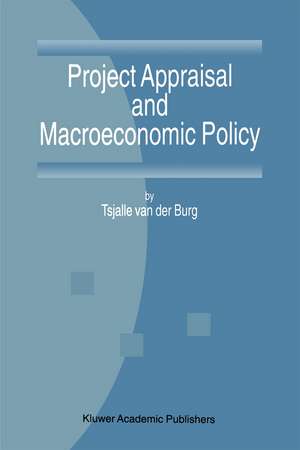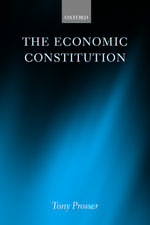Project Appraisal and Macroeconomic Policy
Autor T. van der Burgen Limba Engleză Paperback – 20 sep 2011
Preț: 381.81 lei
Nou
Puncte Express: 573
Preț estimativ în valută:
73.06€ • 78.13$ • 60.92£
73.06€ • 78.13$ • 60.92£
Carte tipărită la comandă
Livrare economică 18 aprilie-02 mai
Preluare comenzi: 021 569.72.76
Specificații
ISBN-13: 9789401065030
ISBN-10: 9401065039
Pagini: 184
Ilustrații: XI, 168 p.
Dimensiuni: 160 x 240 x 10 mm
Greutate: 0.27 kg
Ediția:1996
Editura: SPRINGER NETHERLANDS
Colecția Springer
Locul publicării:Dordrecht, Netherlands
ISBN-10: 9401065039
Pagini: 184
Ilustrații: XI, 168 p.
Dimensiuni: 160 x 240 x 10 mm
Greutate: 0.27 kg
Ediția:1996
Editura: SPRINGER NETHERLANDS
Colecția Springer
Locul publicării:Dordrecht, Netherlands
Public țintă
ResearchCuprins
1. Introduction.- 2. The macroeconomic effects of specific portfolios of projects.- 2.1. Introduction.- 2.2. The macroeconomic effects of projects which lead to savings on fuels and other raw materials.- 2.3. The effects of some portfolios of projects on inflation.- 2.4. Conclusions.- Appendix: A simple, quantitative analysis of the effects of a policy of saving on fuels at the level of the European Union.- Notes.- 3. Existing methods for the social appraisal of projects in situations of unemployment.- 3.1. Introduction.- 3.2. Methods without a welfare-theoretical foundation.- 3.3. Methods with a welfare-theoretical foundation.- 3.4. The consistency between project appraisal and macroeconomic analysis and policy.- 3.5. Implications for the development of an improved method.- Notes.- 4. A method to calculate and evaluate the macroeconomic effects of projects, including small projects.- 4.1. Introduction.- 4.2. The calculation of the effects of a project.- 4.3. Potential errors related to the estimates when large projects or portfolios of projects are analysed.- 4.4. Potential errors related to the estimates when small projects are analysed.- 4.5. The advantages of the method of this study as compared with the conventional macroeconometric method.- 4.6. The evaluation of the effects.- Appendix: The treatment of indirect taxes.- List of symbols.- Notes.- 5. The calculations done with the Freia model.- 5.1. Introduction.- 5.2. The Freia model.- 5.3. The base-run.- 5.4. The calculation of the Ht and the Ut.- 5.5. The extent to which the calculations fulfil the conditions of additivity.- 5.6. The differences between the effects of increases in government investment and development aid in different years.- 5.7. The period to which the analysis refers.- 5.8. Comparison of the calculations made for this study with calculations by the Central Planning Bureau.- 5.9. Evaluation of the errors.- Notes.- 6. The macroeconomic effects of wind energy in the Netherlands.- 6.1. Introduction.- 6.2. Characteristics of the project from a microeconomic point of view.- 6.3. The macroeconomic effects of the project.- 6.4. Conclusions.- Notes.- 7. Converting the method into a dual method.- 7.1. General outline of the method.- 7.2. Shadow prices based on the Freia model.- 7.3. Conclusions.- Notes.- 8. International aspects and the debate about import substitution.- 8.1. Effects on the world economy.- 8.2. Some comments on the debate about the effects of import substitution on the domestic economy.- Notes.- 9. Summary and conclusions.- References.
















